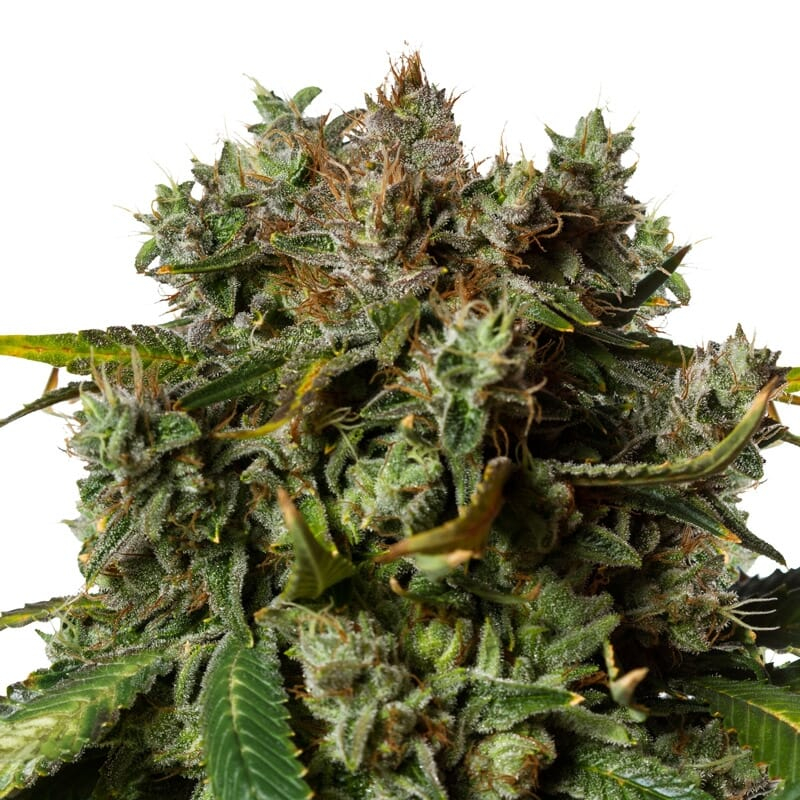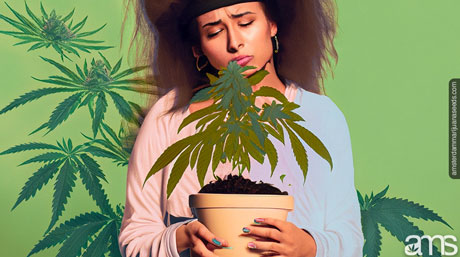Table of Contents
- What is low stress training
- Benefits of low stress training on your cannabis plants
- Types s of low stress training
- Best strains for LST
- Can you use low stress training anywhere?
- How to low stress train your plants
- Tips for getting the most out of your LST session
- When to stop LST
- LST over HST
- Final thoughts on low stress training for autoflower plants
- FAQ
You may have heard that auto-flower cannabis plants are low-maintenance and don’t require a lot of training, and that is true – but there are still ways you can help your cannabis plant produce more buds and increase your yields. One technique is called low-stress training, or LST for short. Read on to learn how to properly low stress train your autoflowers for maximum results.
What is low stress training?
Low stress training is a technique that involves gently bending stems and shaping your weed plants to encourage them to grow in a certain way. By carefully manipulating the stems and leaves, you can control how the cannabis plant grows and ultimately increase your yields. Additionally, LST can help improve airflow and more light penetration to the lower parts of the weed plant, which is especially important for autoflowers that tend to grow shorter and bushier.
Benefits of low-stress training on your cannabis plants
There are a few key benefits to low-stress training for your auto-flower plants:
- Increased yields – By manipulating plant growth, you can encourage it to produce more buds.
- Improved light penetration – LST can help increase light penetration to the lower parts of the cannabis plant, which is especially important for autoflowers that tend to grow shorter and bushier.
- Stress relief – By gently bending and shaping the plant, you can help relieve stress which can ultimately lead to a healthier plant.
- Airflow – By improving airflow throughout the plant, you can help reduce the risk of
Types of low stress training
There are several types of cannabis low-stress training that outdoor and indoor growers can use to increase yields and improve the quality of their crops. (elke foto een voorbeeld van de methods)
Topping
- One popular plant training method is called topping, which involves cutting the top of the cannabis plant just above a set of leaves. This causes the plant to produce two new shoots, resulting in a fuller canopy and more bud sites.
FIM
- Another common technique is known as FIMing, or “finger-in-the-middle.” This involves gently pinching the stem of the plant between your thumb and forefinger, causing it to branch out and produce more buds.
SCROG
- Vertical SCROG (Screen of Green) allows you to maximize your growing area. This technique works by placing SCROG cables vertically in your grow tent. In doing so you can encourage a greater variety of bud sites for the crops. The side branch pull is also used to help hold down the main branches. The buds get quite heavy as the side branches get stronger now that they are no longer holding them.
Best strains for LST
Since Indica plants grow smaller and more dense than the Sativa, Indica and Indica-dominant hybrids are always the best choices. Because of its compact growth traits, it is more capable of low-stress training. Low-stress training can boost yield in the cannabis industry. Your yield will dramatically increase if you choose a potent Indica strain.
Here are some AMS auto-flower cannabis strains that work well for low-stress training:
Northern Lights Cannabis Seeds
These are just a few of the best Indica cannabis seeds for LST, but feel free to experiment with different strains to see what works best for you.
Can you use low stress training methods anywhere?
LST plant training can be used on autoflowers whether you’re growing cannabis plants indoors with artificial illumination or outside in the sunlight. LST is more frequently employed for indoor cannabis growers since it helps maximize production in a small area, but many outdoor farmers also choose to use these techniques to enhance the yield of their crops.
Why not use LST techniques to help ensure that every flowering plant has the chance to grow a big, fat, juicy nugget? Nobody wants a bunch of popcorn buds (the common name given to the low quality, low density buds produced by the lower side branches of a cannabis plant).
How to low-stress train your auto-flowers
To start, gently bend the main stem of the plant so that it’s horizontal. You can then use small clips or ties to secure the stem in place. Once the plant has recovered from the initial bending, it will begin to grow horizontally along the new stem. As the plant grows, you can continue to bend and tie the stems to encourage a more compact growth habit.
To ensure that your plant doesn’t become stressed during the training process, be sure to keep an eye on its leaves during the vegetative growth stage. If you see any leaves that are wilting or turning yellow, simply loosen the ties or clips so that the plant can recover.
Tips for getting the most out of your LST session
- Start low stress training – The earlier you begin low stress training, the better. This will give your plant more time to adjust to the new growth pattern and produce more buds. Start low stress training as soon as the first true leaves are showing.
- Be gentle – Remember that autoflowers are sensitive to stress, so be sure to handle them gently. Avoid tugging or pulling on the stems too hard, as this can damage the plant.
- Monitor your plant – Keep an eye on your plant during the training process and make sure that it’s not showing any signs of stress. If you see any wilting leaves or yellowing, simply loosen the ties or clips so that the plant can recover.
When to stop LST training
Low pressure exercises typically stop at the beginning of the bloom phase of your plant. When cannabis flowers, its initial blooming burst lasts several weeks and is evident in its growth. During the stretching period, maintain a flat canopy as the trees seek light. Approximately one month later, stretching stops and the marijuana plant will concentrate on the flowering stage. Generally, vegetative development is slow at this stage, so further training is not necessary. Another reason why low stress is stopped while flowering is to reduce bud damage.
Low stress training over high stress training methods
There are several ways to train your cannabis plants, and they all work fine, but with autoflowers it is advised that you only utilize low-stress training techniques. Your plant will finish up with a similar aspect whether you use LST or HST. When done correctly, training your auto-flower plant can mold it to the ideal height and structure. However, you should exercise caution because cannabis plants, particularly autoflowers, are susceptible to stress.
This occurs because autoflowers only have a short window before beginning to flower. igh-stress tactics on autoflowers can lead to decreased yields as stressed plants can take up to 7 days to recuperate and resume normal growth. With too much stress the plant could go into survival mode, which means that it could stunt growth, or weaken the plant.
Final thoughts on low stress training for auto-flower plants
By using low stress training techniques, you can help your auto-flowers produce even more buds and increase your yields. So, why not give it a try? Be sure to start early in the vegetative growth stage and monitor your entire plant closely for any signs of stress. If done correctly, you’ll be rewarded with bigger and better buds during the flowering stage.
FAQs about Low stress training
Can you do low stress training during flowering?
Weed growers have long used low-stress training during flowering to increase yields and produce healthier plants. LST involves using techniques such as bending and topping to encourage the plant to produce more lateral growth. This results in a larger number of buds, which can lead to increased yields. LST can be performed throughout the flowering stage, but it is most effective when done early on.
Does low stress training increase yield?
Training with minimal stress can be extremely beneficial. These low stress training regime methods do require some time and effort, but they can be a great way to maximize your weed yield. If you are looking to get the most out of your plants, be sure to give low-stress training a try.















